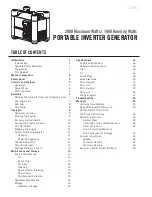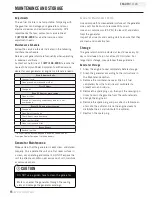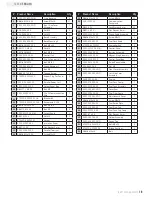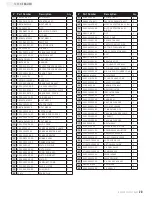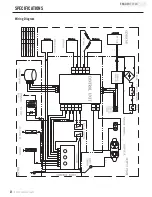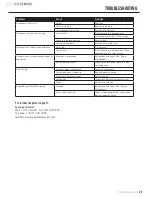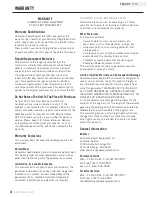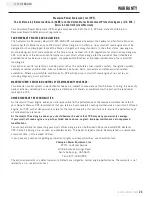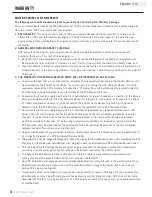
11
REV 73538i-20110622
ENGLISH
73538i
do Not Overload Generator
Capacity
Follow these simple steps to calculate the running and
starting watts necessary for your purposes .
1 . Select the electrical devices you plan on running at
the same time .
2 . Total the running watts of these items . This is
the amount of power you need to keep your items
running .
3 . Identify the highest starting wattage of all devices
identified in step 1 . Add this number to the number
calculated in step 2 . Surge wattage is the extra
burst of power needed to start some electric driven
equipment . Following the steps listed under “Power
Management” will guarantee that only one device will
be starting at a time .
Power Management
Use the following formula to convert voltage and
amperage to watts:
Volts x Amps = Watts
To prolong the life of your generator and attached
devices, follow these steps to add electrical load:
1 . Start the generator with no electrical load attached
2 . Allow the engine to run for several minutes to stabilize .
3 . Plug in and turn on the first item . It is best to attach
the item with the largest load first .
4 . Allow the engine to stabilize .
5 . Plug in and turn on the next item .
6 . Allow the engine to stabilize .
7 . Repeat steps 5-6 for each additional item .
Never exceed the specified capacity when adding
loads to the generator .
NOTE
Overload Operation
The overload indicator light will turn on when the load
exceeds 1750W . If the load exceeds 1900W, the light
will blink and cut power to the receptacles . To recover the
power, you must shut off the engine, wait 5 seconds, and
restart the generator .
OPERATION
stopping the Engine
1 . Turn off and unplug all electrical loads . Never start or
stop the generator with electrical devices plugged in or
turned on .
2 . Let the generator run at no-load for several minutes
to stabilize internal temperatures of the engine and
generator .
3 . Turn the engine switch/fuel valve to the “Off” position .
4 . Allow the generator to cool down completely to room
temperature
5 . Turn the fuel cap lever vent to the “Off” position after
the generator has cooled down completely .
12V dC Outlet
1 . Before connecting the battery charging cable to a
battery that is installed in a vehicle, disconnect the
vehicle battery ground cable from the negative (–)
battery terminal .
2 . Plug the battery charging cable into the DC
receptacle of the generator .
3 . Connect the red (+) battery charger lead to the red
(+) battery terminal .
4 . Connect the black (–) battery charger lead to the
black (–) battery terminal .
5 . Start the generator .
The 12V DC outlet is ONLY to be used with the supplied
12V battery charging cable . The DC output is unregulated
and will damage other 12V DC products . When using the
DC outlet, turn the Economy switch to the “OFF” position .
Be sure all electric devices including the lines
and plug connections are in good condition before
connection to the generator .
NOTE
Do not start the vehicle while the battery charging
cable is connected and the generator is running . It
will not give the battery a boost of power . The vehicle
or the generator may be damaged . Charge only vented
wet lead acid batteries . Other types of batteries may
burst, causing personal injury or damage .
CAuTION



